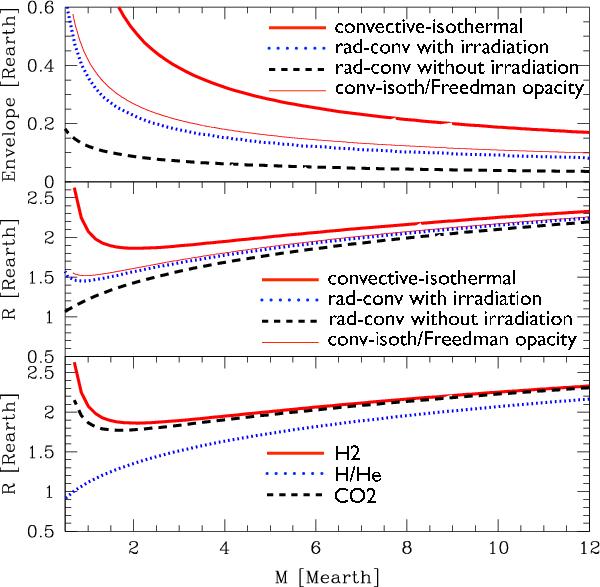Fig. 5

Top: depth of the gas envelope (in Earth radius), as a function of the planetary mass, for the three models presented in Sect. 3.4, for a pure H2 envelope. The red solid line is the convective-isothermal model, the black dashed line is the radiative-convective model without irradiation, and the blue dotted line is the radiative-convective model with irradiation effect. The red thin solid line is similar to the red solid line, except that we use the opacities of Freedman et al. (2008), for the low metallicity case, to derive the planetary radius. Middle: the mass-radius relationship for the four same models. Bottom: the mass-radius relationship for the convective-isothermal model, assuming three compositions. The red solid line is for pure H2, the black dashed line is for a mixture of H and He in solar proportions, and the blue dotted line is for CO2 (not including condensation). For the three panels, the planetary interior model is computed as in Sect. 3.2, and the surface temperature and pressure are equal to 375 K and 1 GPa respectively.
Current usage metrics show cumulative count of Article Views (full-text article views including HTML views, PDF and ePub downloads, according to the available data) and Abstracts Views on Vision4Press platform.
Data correspond to usage on the plateform after 2015. The current usage metrics is available 48-96 hours after online publication and is updated daily on week days.
Initial download of the metrics may take a while.


